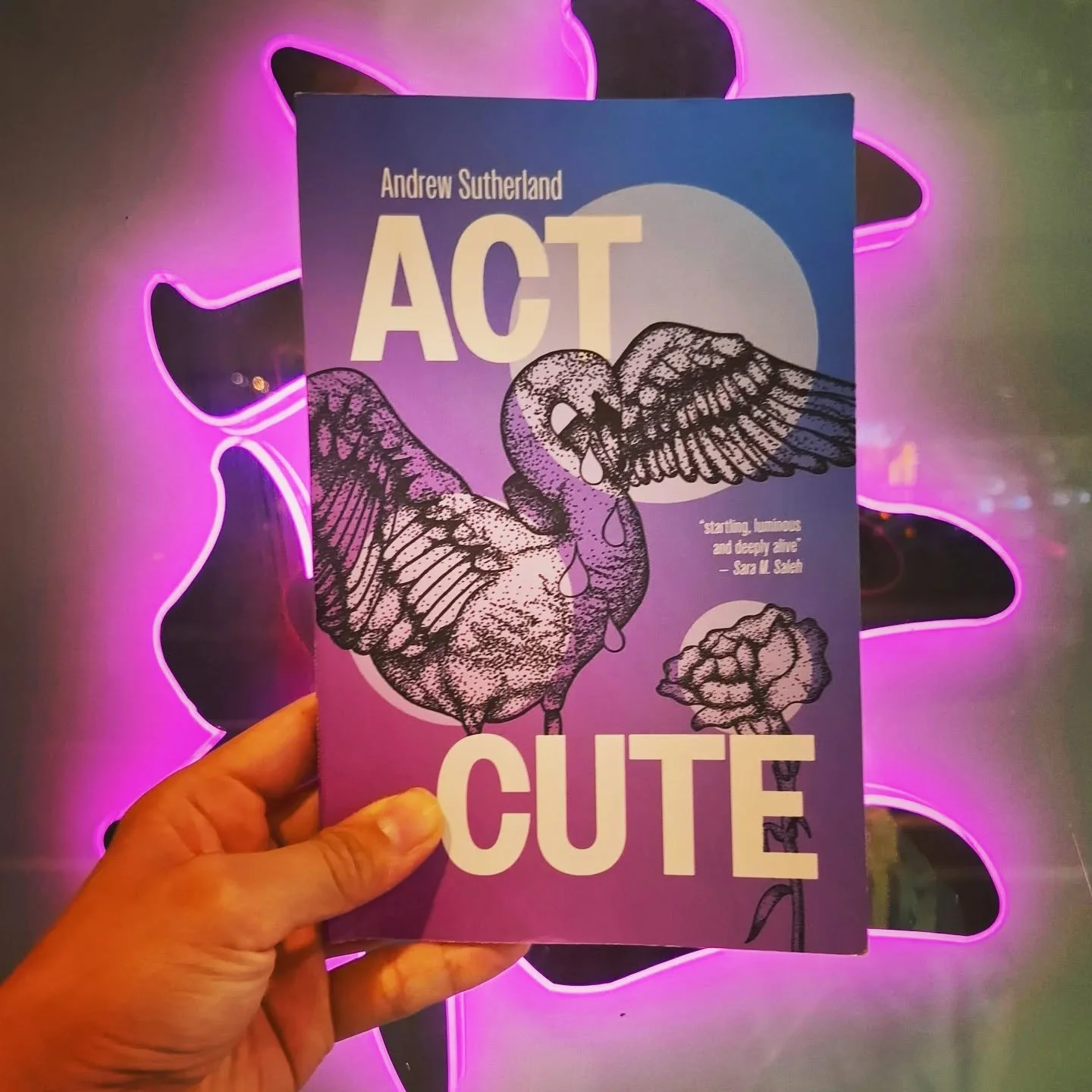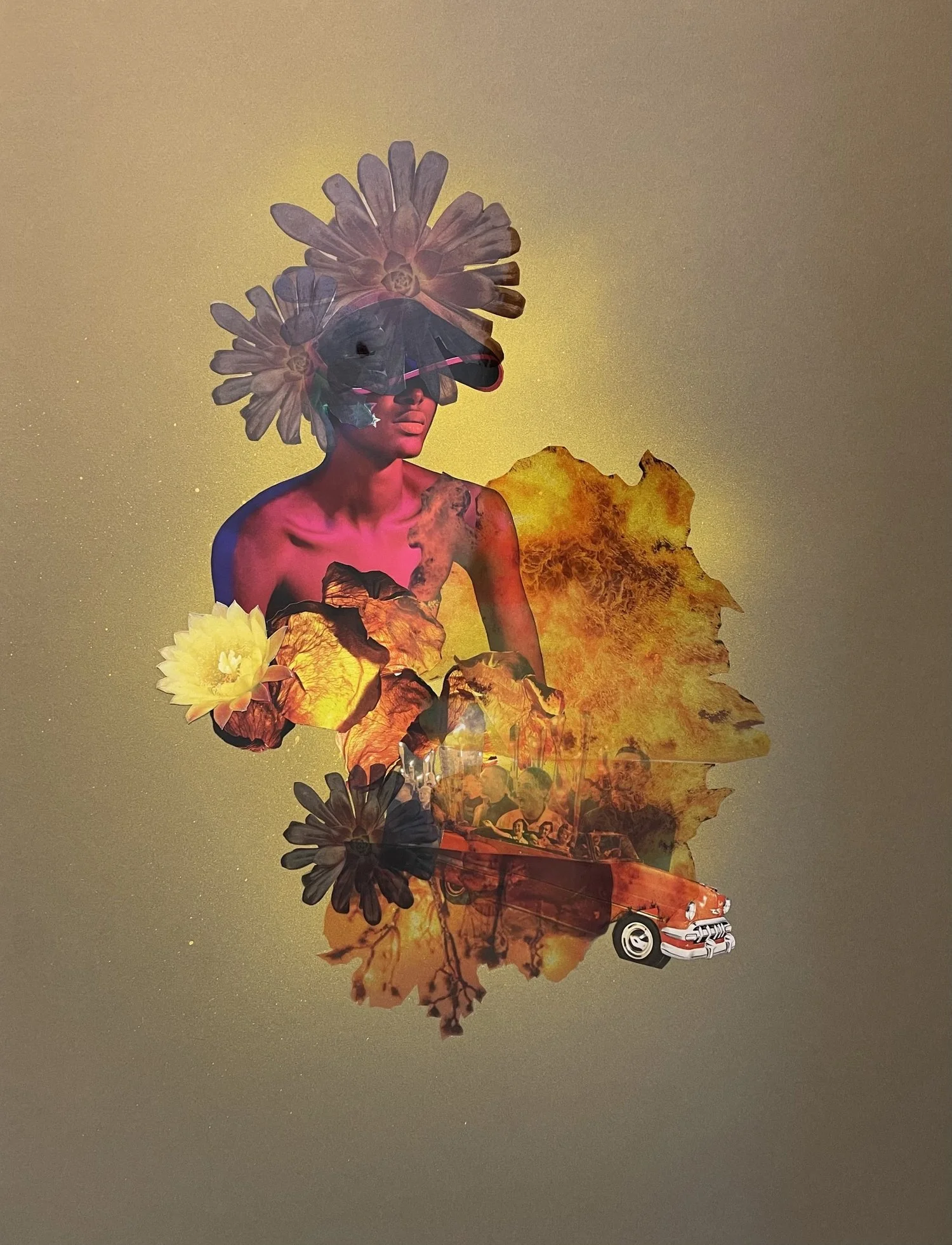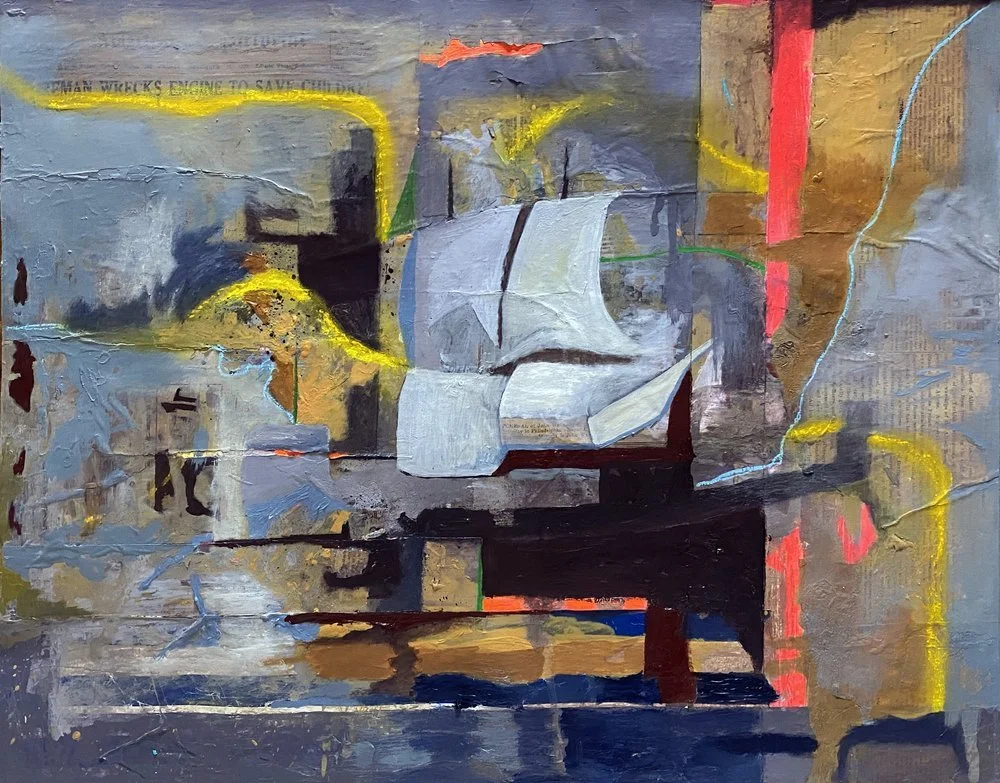What Paprika Is Really About: And what it meant to Director Satoshi Kon
By Branden Zavaleta
Photograph courtesy Madhouse / Sony Pictures Entertainment Japan
Paprika is a tough movie to follow. It’s a convoluted sci-fi detective story full of two-faced characters, ambiguities, and genuine gibberish. Its b-plot is a man’s psychotherapy, and all the while, dreams are blurring with reality–one second Paprika’s a mermaid, the next she’s swallowed by a giant whale, the next she’s fallen on a pile of stuffed dolls. All together, Satoshi Kon's film is abstract, mind-bending, meta-textual, and determinedly postmodern; it’s thrilling, but thoroughly confusing. Yet there is method to its madness, and reading the Paprika novel by Yasutaka Tsutsui explains the slippery details of the interweaving narratives, metamorphic characters, and mesmerising imagery.
Now, of course, expecting any viewer to have read the book before seeing the film is a tall order, and expecting prior knowledge of Tsutsui’s hefty 300+ page tome is a true impossibility. But beyond just understanding the strange plot machinations, the novel has opened my eyes to seeing Paprika as the grand culmination not only of the director’s oeuvre, but also of the author’s bibliography, and of the discography of the film’s composer, Hirasawa Susumu.
What first led me to this conclusion was how grounded the novel is. Sure, the big finale involves mania and the demon Asmodai, but aside from that, the novel is leisurely-paced and thoughtfully considered. It expounds on the mundanities of office politics, press conferences, and patient dream-analysis. It discusses Jung and Freud, their theories on the way that symbolism and waking life blend together in your dreams (for instance, “Elevators commonly appear in dreams as symbols of sexual desires”). And most importantly, the novel's characters feel like real people. They’re concerned about their family, they’re worried about their jobs, and they’re interested in odd psychosexual matters. If the film’s focus is on dreams, then the novel’s focus is on reality.
Take the protagonist Dr. Atsuko Chiba for instance. She’s a beautiful, composed, and ingenious woman, and the film boxes her into just those qualities, which makes her a surreal stereotype. But in the novel, she’s complex and human. She’s troubled by the pressures on women to conform, to be submissive, and to be a housewife. Her forced repression manifests as Paprika, her dream doppelganger. And during the story, together they explore sexual freedom and the relationship of beauty to power. When Atsuko’s finished wrestling with these themes, and the cruel and uncaring men in her life, she decides to marry the one she loves: her obese, childish, and ingenious colleague Dr Tokita. She does this despite the judgement his appearance might bring her, and despite her disdain for becoming a housewife. With this, Paprika becomes unnecessary, and it becomes clear that the story’s events worked as her own form of high-powered psychotherapy. It’s a cathartic and lovely ending, but all this detail and insight is cut completely from the film. What remains is the story written in shorthand. So the novel is necessary to understand the film’s stunning barrage of dream imagery and symbolism.
For example, the villain is a sexist company chairman. In the novel, he’s ultimately defeated by a giant statue of Jesus dramatically transforming into a woman. But in the film, it’s far stranger. A spectral baby emerges from the back of a giant toy robot, and then the baby defeats the villain—who is now a giant spectre—by absorbing him like a blackhole and maturing into a woman. And it happens within seconds, so it’s almost impossible to intuit what’s meant by this. But this scene is also spectacular in a way that only animation can be. So there’s the trade-off: If Chiba’s character arc was earned (as it is in the novel), this finale would be stunning and affecting, but no film can capture her arc so completely, and especially not costly, hand-drawn animation, which would be wasted on corporate minutiae anyway (though a TV series might be capable, and Cathy Yan is set to direct one at this very minute). However, to Satoshi Kon, that’s all beside the point. He’s happy to sacrifice these human details for something more captivating instead: for imaginative visuals.
‘I don't tend to empathise with the characters themselves,
but I intend to direct them with a great deal of empathy
for the situations in which they are placed.’– Satoshi Kon[1]
Stunning visuals has been the long-running goal across Kon’s filmography. It has appeared as the theme of fantasy intruding on reality, but more accurately, he simply loves to creatively break convention and to use his imagination. This is clear if you look at his career. Before he was a director, he was a manga artist. He made charming comics about baseball, summer romances, and sci-fi dystopias—but they were limited by their static form. They all include moments that require movement for their full effect. But when these comics caught the eye of manga-giant Katsuhiro Otomo, Kon was taken on as a manga artist for Akira, and moved into animation with Otomo. As an animator, he threw off the limitations of static images, as he had the means to dream bigger—to recreate the twisting, transforming nature of fantasies—but he still had to take directions from others.
“The interaction of reality and dreams is a motif I still have interest in, and I keep bringing it back into my work. Since my debut Perfect Blue [1998] got attention for that motif, I intentionally used it as a central focal point in Millennium Actress, Paprika, and so on.” – Satoshi Kon[2]
His directorial debut, Perfect Blue, was the next step towards unbound imagination in his work. And for many viewers, Perfect Blue’s fractured personalities and weird delusions were the first glimpse into the transcendent dream imagery that he was chasing. But the story was still constrained by reality; it couldn’t be truly unreal. This was a problem in his other major films, which all have wonderful and ingenious moments of invention, but they all left Kon wanting more. In fact, it was Opus, the height of his manga career, which best satisfied his wants. Opus is about a manga artist, whose reality and fantasy meld together when he is sucked into his work (a work strikingly similar to Akira). Opus has some stunning panels that are reminiscent of Paprika, but again the manga is limited by its static form—it has no sound, no colour, no movement. It leaves the reader to imagine these for themselves. And if this was what he was chasing–and what forced him to change mediums–it says much about Paprika’s importance to him. Opus resembles Paprika more than any of his other works. Just as it depicts a manga artist blending with his work (at a time when Kon was a manga artist), Paprika depicts a director’s dreams blending with reality (when Kon was a director). So, if Opus marked Kon fighting against the upper limits of his creative medium, so did Paprika (and if his career had continued, he might have started again in another medium, such as video games).
A page from Kon’s manga Opus
You can see this in how unique and unsuspecting the transitions are in Paprika. One second Paprika is walking through a back alley, the next she’s a toy fairy. These charming subversions happen constantly, and their imagination has made Paprika unendingly influential (Inception and Spider-Man: Into the Spider-Verse are just two of the inspired).
So Paprika was Kon’s dream project (in both senses), and it left a high watermark on his career. In fact, it was so satisfying that Kon called Paprika the final word in his reality-versus-fantasy theme. This might not be obvious, since his unfinished final film, Dreaming Machine, seems to continue the theme. But Dreaming Machine was to be a step beyond the pale, a step through the looking glass. He planned to create a film only of dreams. Sadly, Dreaming Machine is unlikely to ever release, but it’s clear that it wouldn’t have been mind-bending, and instead would have been a coming-of-age, adventure film. A film similar to Osamu Tezuka’s Astro Boy, or perhaps Tezuka and Otomo’s Metropolis (Tezuka was another inspiration of Kon’s).
Concept art for Dreaming Machine from The Anime Works of Satoshi Kon
But, in a stars-aligning sort of coincidence, Paprika was a very similar high watermark moment for the careers of two other creators: Paprika’s author (Yasutaka Tsutsui) and Paprika’s composer (Susumu Hirasawa).
For Tsutsui, the theme of unbridled imagination and dreams was a constant interest. It’s not only the main theme of the Paprika novel, it was the main theme of his college thesis (specifically, creative psychology and surrealism). It’s an interest that can be found all across his illustrious career. His comedic short story “The Dabba Dabba Tree” has a bonsai that gives its owners such vivid sex dreams that people cannot distinguish reality from the dreams, and they run naked through the street. And in the novel before Paprika, Tsutsui pushed this theme perhaps too far. Gaspard in the Morning is a book with five intermingling worlds. He wrote it for a serial magazine, and he would take advice from readers to shape the book. However, he didn’t just take their advice, he wrote them and himself into the story too. The result is a story about a man writing for a serial magazine and taking notes on his story, which is about a man living in a video game. So, ostensibly, there are five worlds in the book. There is the world of reality, of the text, of the fictionalised writer, of the protagonist, and of the game. It’s experimental to the point of messiness, but after it, he wrote Paprika: his finest hour of mixed realities and explosive creativity.
Like Tsutsui and Kon, Paprika’s composer was no less obsessed with creativity. Hirasawa’s fractally-patterned music repeats at different scales, tones, and speeds; psychology and philosophy suffuse his lyrics. It’s music that has often defied classification, and that’s why Hirasawa was Kon’s favourite composer (he even took the name Dreaming Machine from a Hirasawa title). Kon and Hirasawa had worked together before Paprika, but Hirasawa’s unusual and elemental soundtrack in Paprika is the most acclaimed of their collaborations. In fact, one of the film’s most iconic images was inspired by Hirasawa’s Parade. The bouncing, chopped, and screwed song brilliantly captured the novel’s “schizophrenic dream”, and the result was the iconic rolling procession of musical frogs, lucky cats, and the Statue of Liberty. Just as the song says, it’s ‘The parade of insanity’. But Hirasawa’s work being inspiring was nothing new. What stood out was how popular Parade became. Despite being in the film for only a minute, it has become his most popular song internationally.
Photograph courtesy Madhouse / Sony Pictures Entertainment Japan
Beyond making Paprika a collection of Kon’s influences, Tsutsui’s and Hirasawa’s work redefines Paprika as a film. It’s just sad that Tsutsui’s and Hirasawa’s contributions play second fiddle to Kon’s aspirations, as the contributions suffer for it; Tsutsui’s complex plot and characterisations have been condensed, and Hirasawa’s Parade has been cut down and played without his stellar vocals.
But there is hope for a perfect showcase of these three great works. With a Paprika TV series on the horizon, a balance could be found. The complexities of Dr. Chiba and her life could be detailed in live-action. The imaginative dreams and visuals could be animated, and the generous runtime of a full TV series could allow Parade to play fully during the opening sequence. But if that turns out to be just a fantasy, then perhaps the best cure is to take the book and the soundtrack separately, and as supplements to the film. Experiencing them beforehand fills in the cracks, making the stunning film into a sublime intersection of three great artists.
Special thanks to
Screenmusings.org
Andrew Driver for his Tsutsui translations
The managers of the Kon’s Tone site.
Anime Obsessive for their write-ups of Kon’s Final Film, and his Lost Projects.
Endnotes
[1] 19-2007年8月 カナダから『パプリカ』について - KON'S TONE
[2] A tribute to Satoshi Kon – Madman Entertainment
[3] The Girl Who Leapt through Time - Alma Books
As Australian freelance journalist, Branden Zavaleta studied psychology at Curtin University. His work focuses on the arts, in all their forms, and it can be found in The AU Review, The Curb, GamePro, Far East Films, and more. Aussie Indie Artists, his column in The AU Review, interviews emerging artists and supports their work.
If you’ve enjoyed reading this article, please consider making a donation. Your donation goes towards paying our contributors and a modest stipend to our editors. Singapore Unbound is powered by volunteers, and we depend on individual supporters. To maintain our independence, we do not seek or accept direct funding from any government.













Is the immovable “nation/of know” opposed to or running on an unstoppable force? Three poems by Ryan Phung.